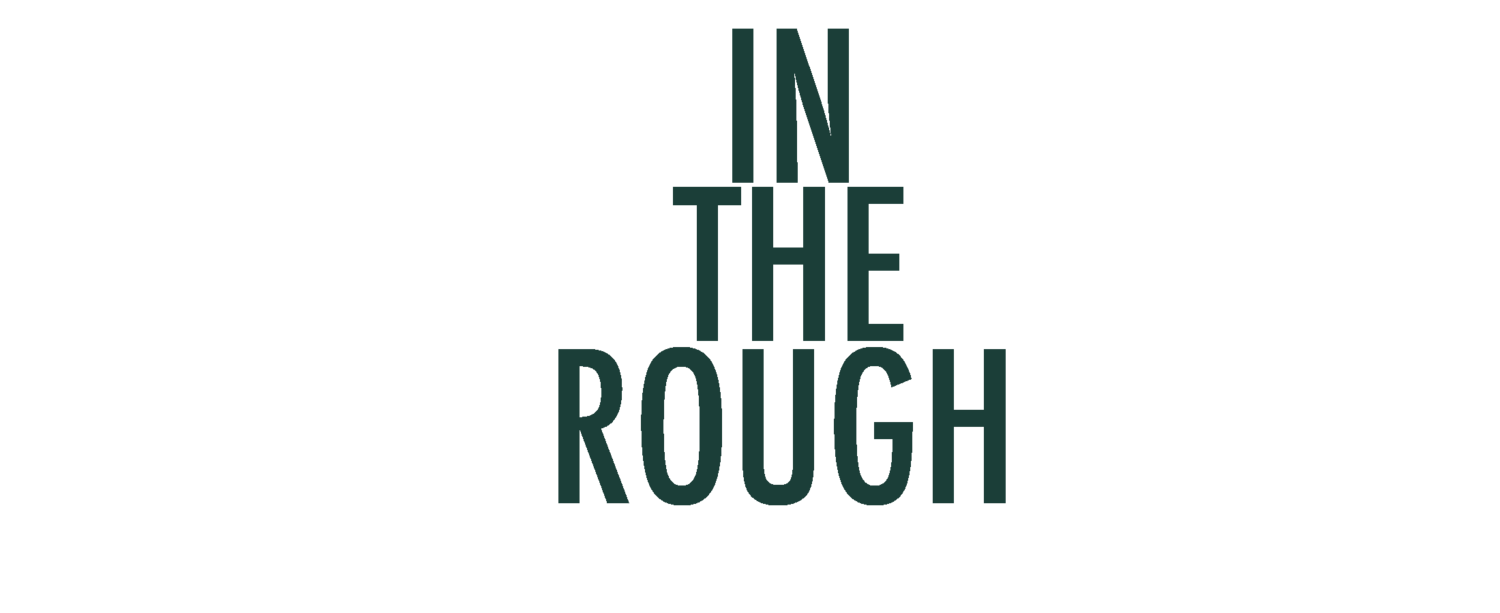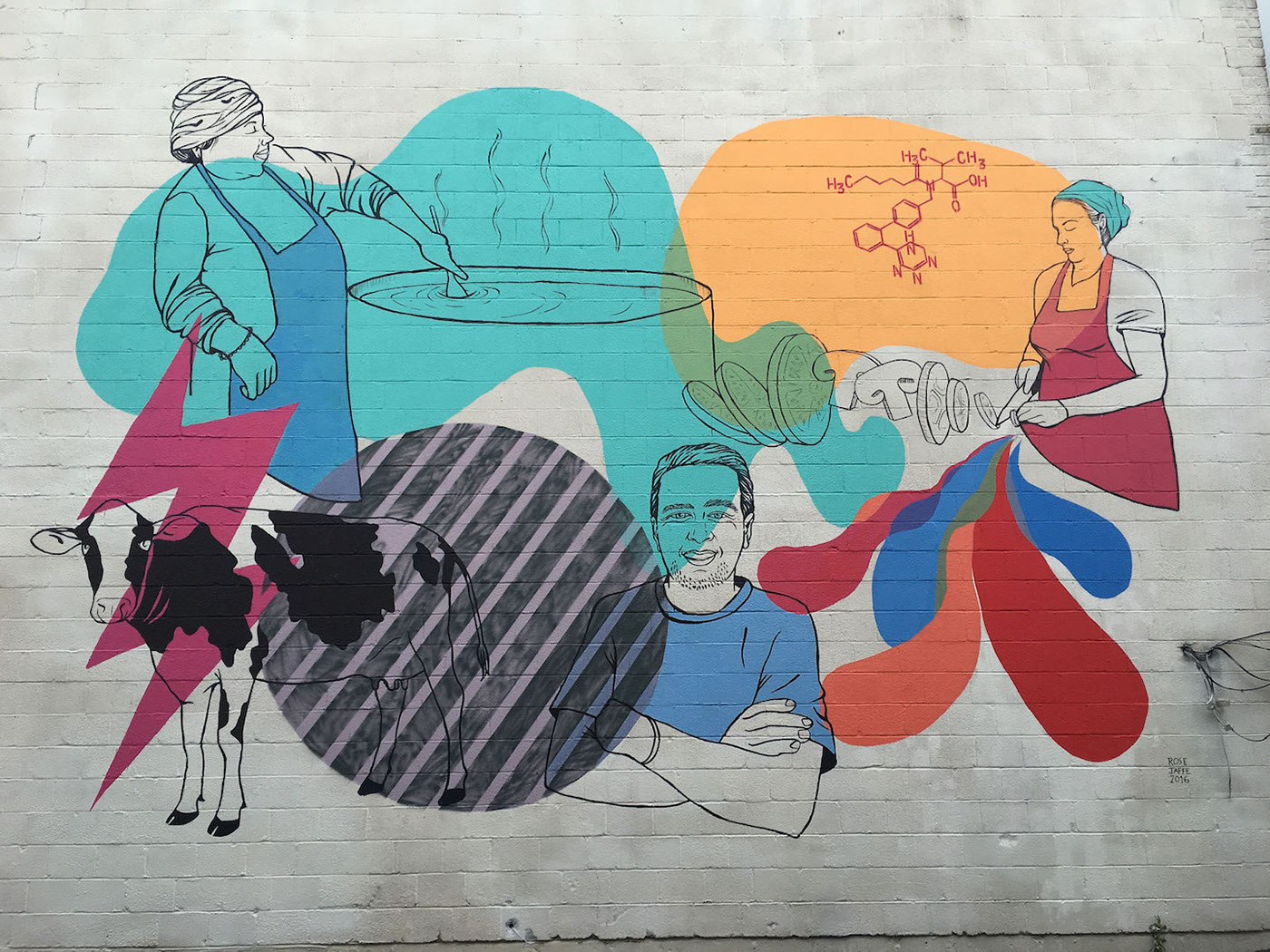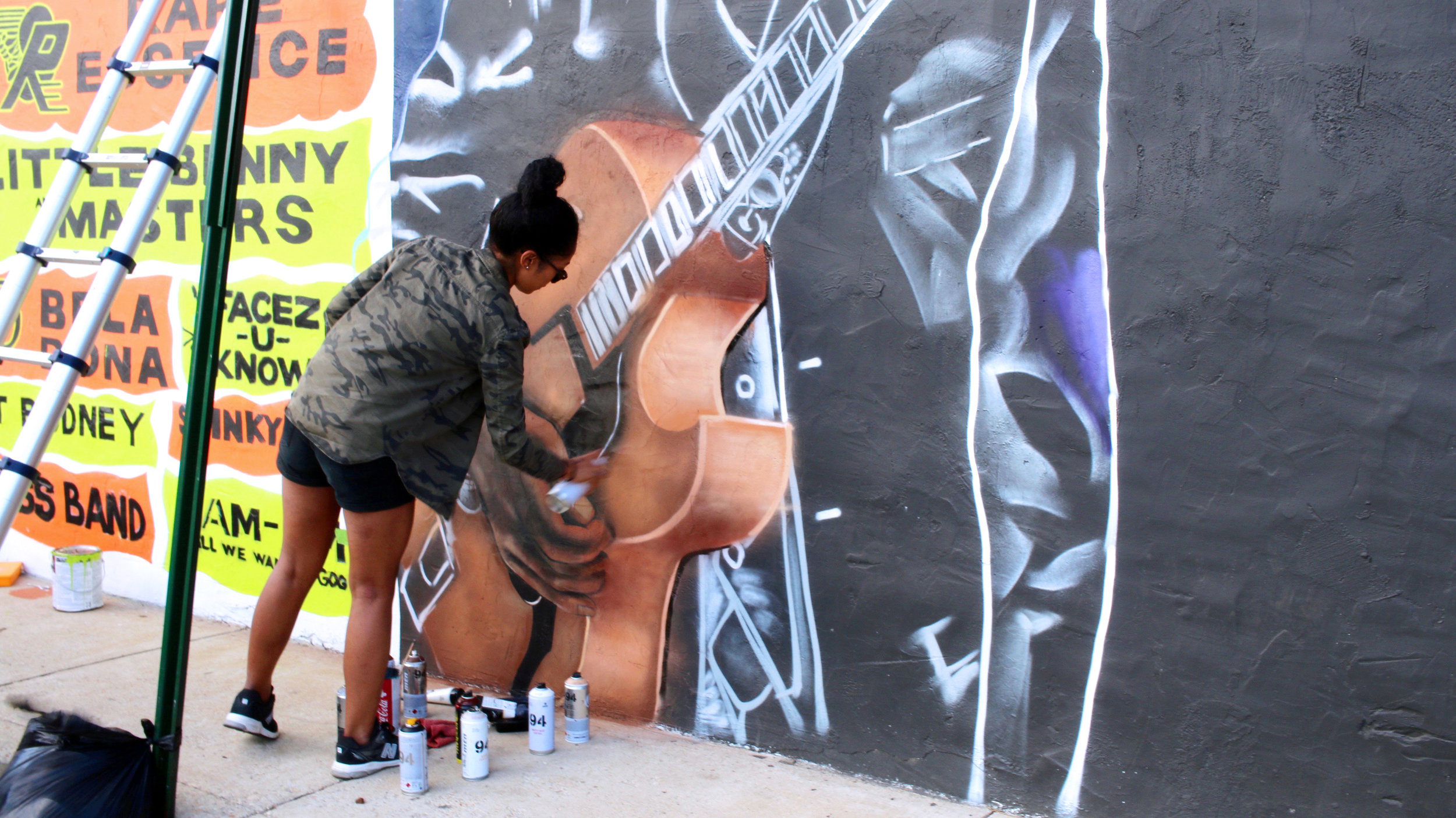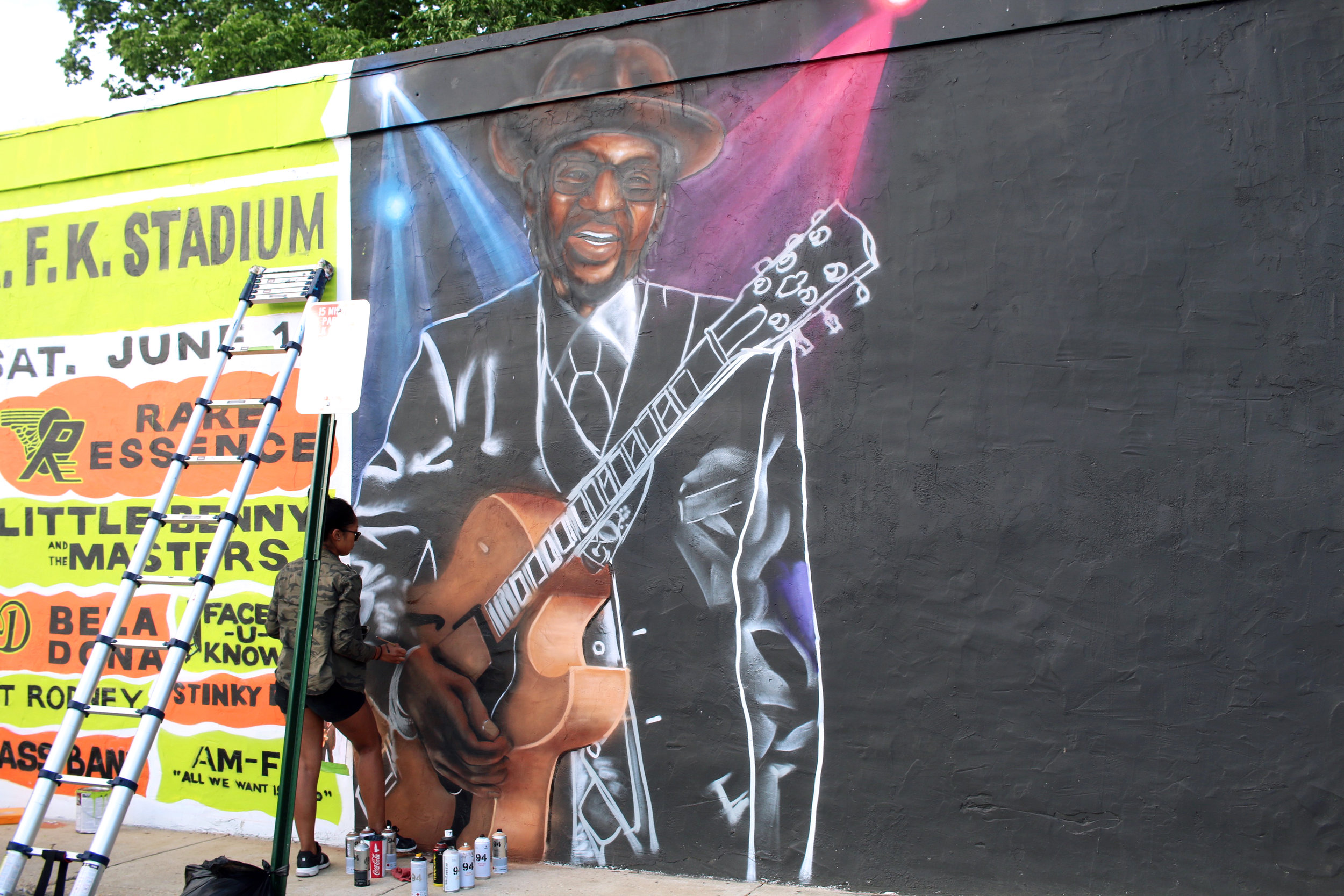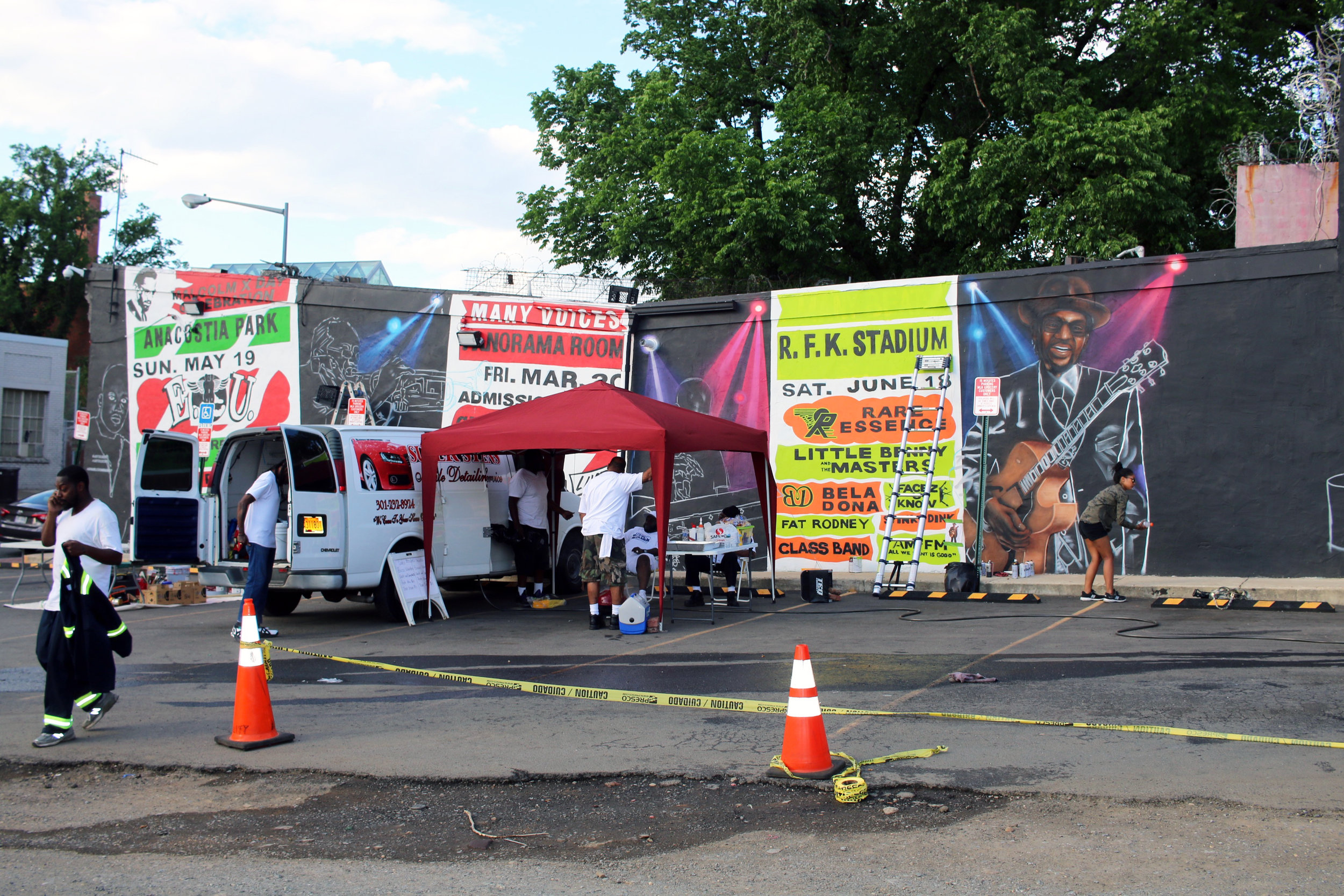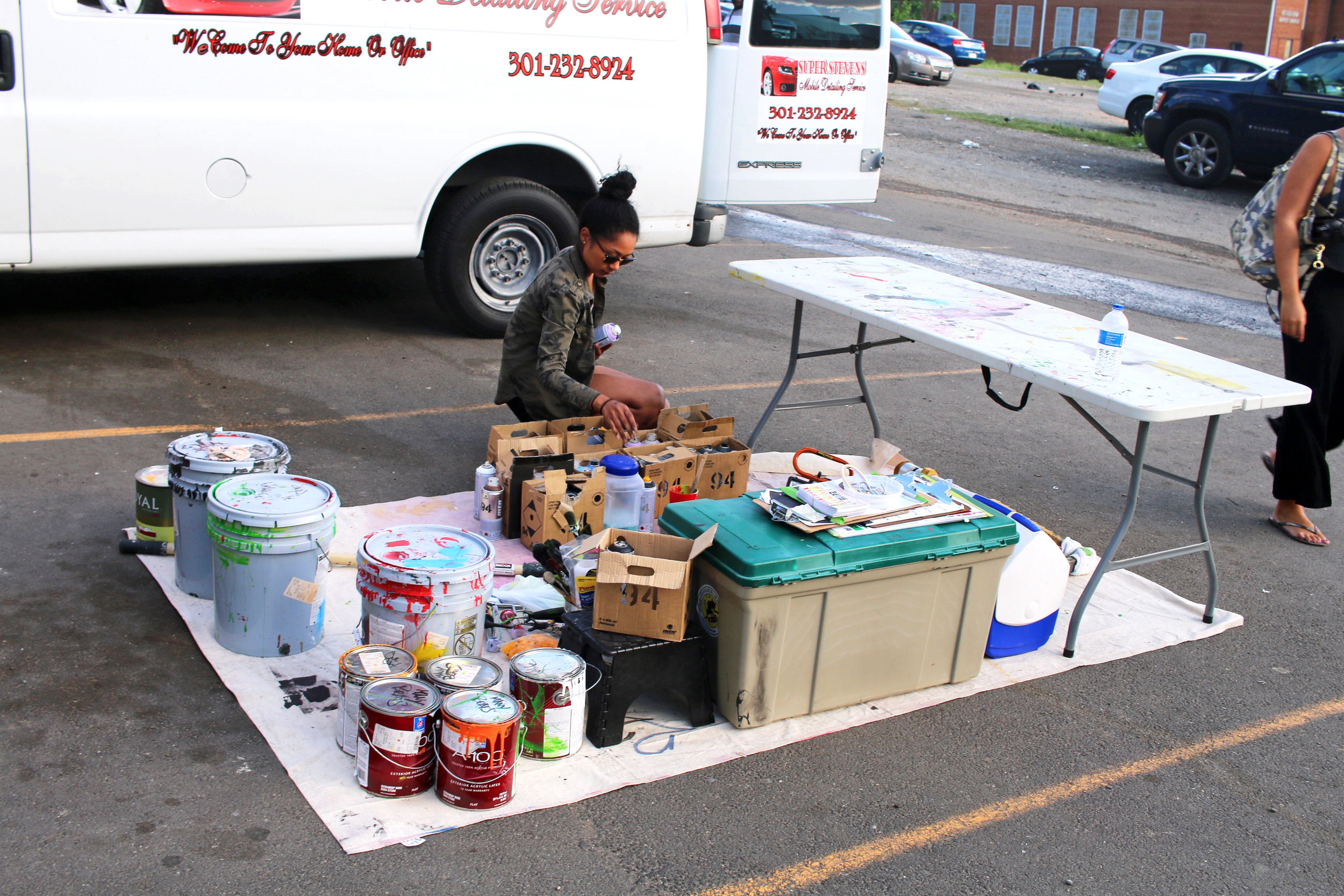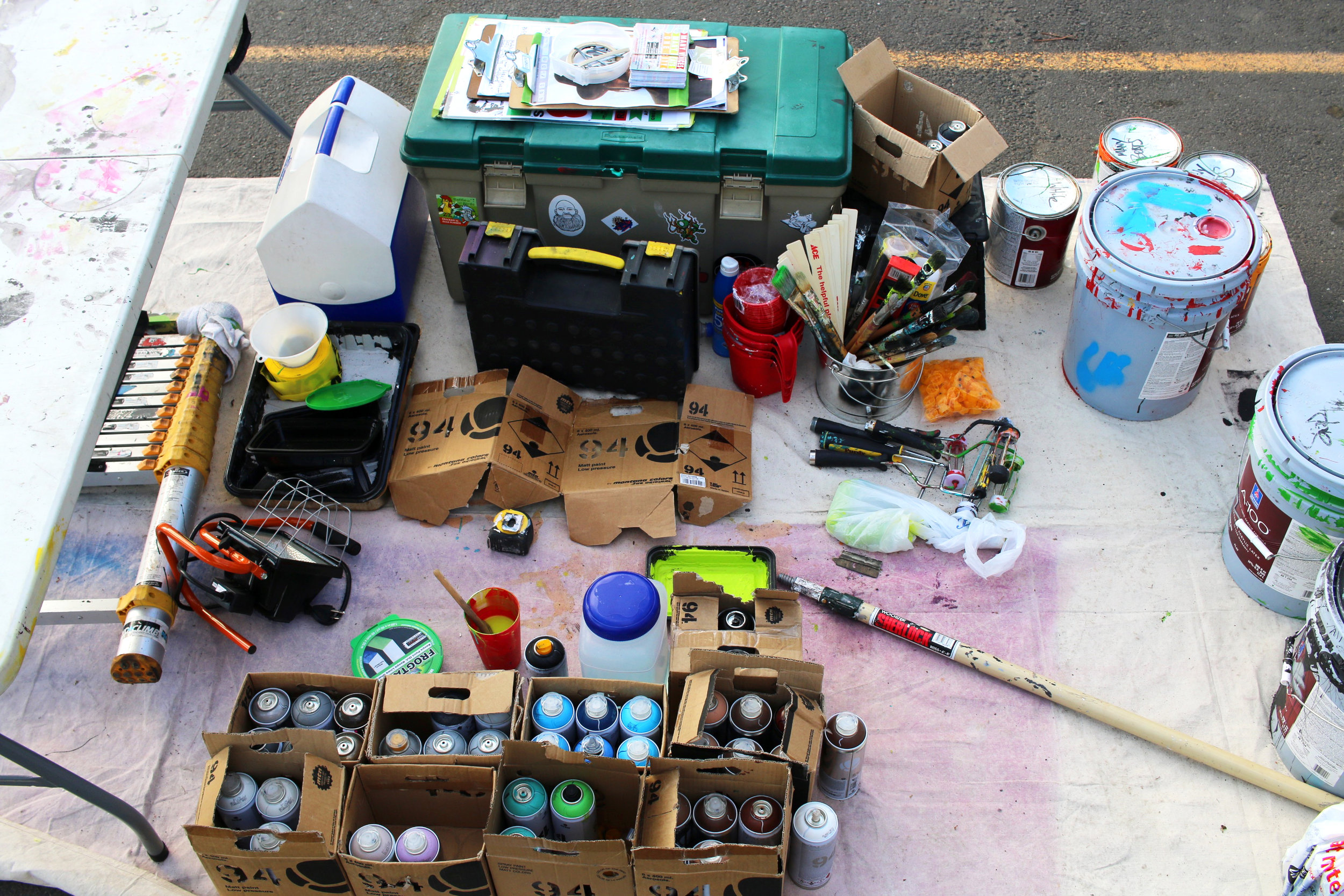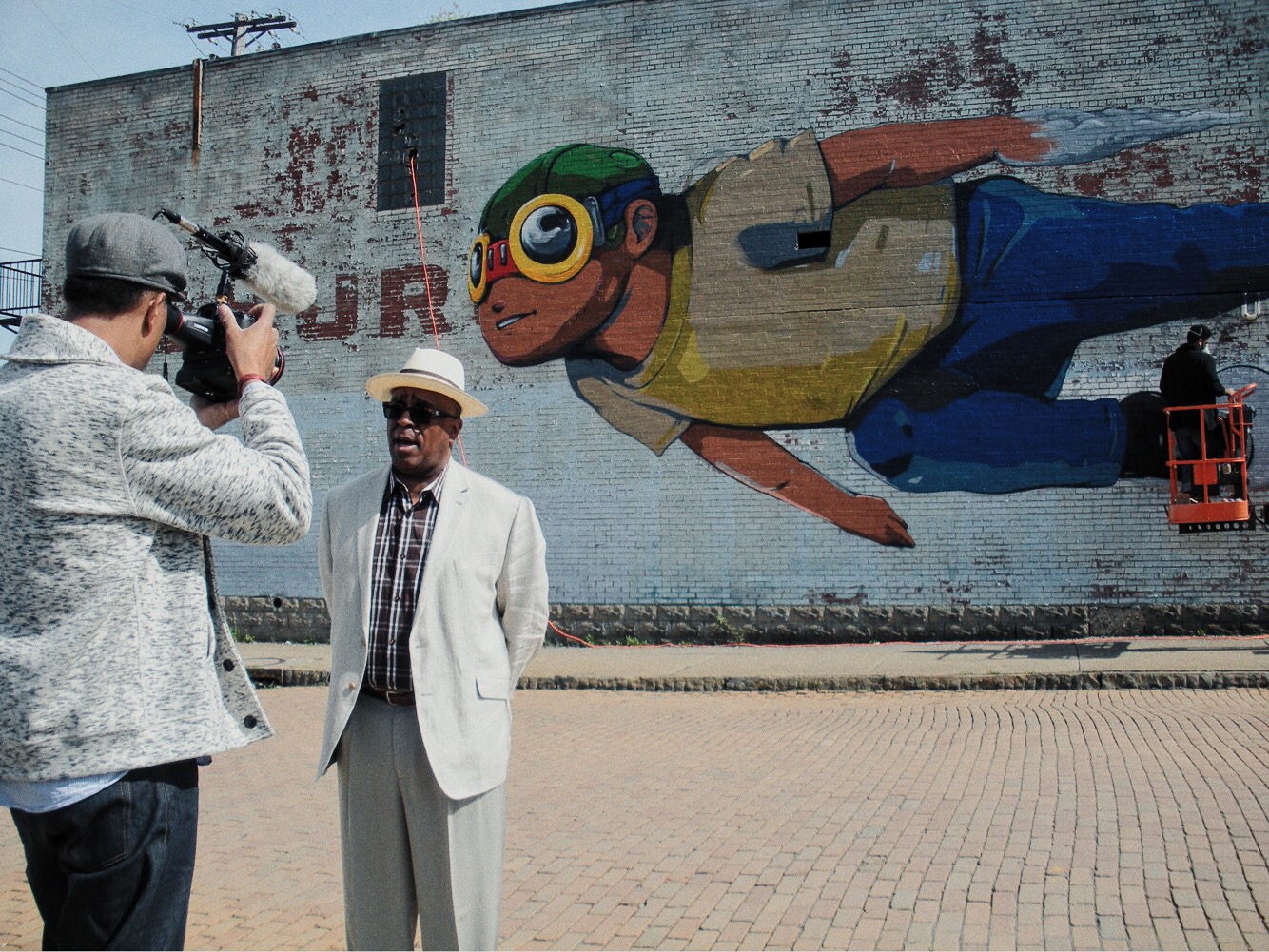Chris Gellein and Becca Melville co-produce and co-star in their documentary (Hair)itage, a film about a young woman seeking to understand how her ethnically diverse background shapes her hair and her identity.
Melville is fare-skinned with thick, black hair. She's Jewish and Jamaican, although depending on the day and what hairstyle she wears she may be mistaken for hispanic or Asian heritage.
"My hair is the signifier that 'Oh, she's definitely something else,' which is why when I straighten it it's very much like changing hats, like changing identities because I don't present as black. I present as not white, but it's not black," she says.
Becca at Rachel Joyce Organic Salon in NW Washington, D.C.
Gellein, who could pass as a paler Ab-Soul, also shares a mixed heritage as his mom is from Trinidad and Tobago while his dad is of Scandinavian, Irish, and Welsh descents.
"People don't guess that I'm Caribbean because I look dark enough to pass as African American of some mix, so it's never really a thought. I'm just seen as black," he says in the video. "I find myself not separating from African Americans, but there's a little bit more of a distinction between the Caribbean culture that I connect with that I don't connect with on the same level as African American [culture]."
Watch Becca detail her morning routine and the various products she uses that are compatible with her hair, and curly-haired friend, Maryah Greene, transform Melville's hair into a retro half-braided style. Chris and Becca also visit Rachel Joyce Organic Salon where a young patron talks about her annoyance with people touching her afro.
From straight to curly: the evolution of Chris' hair.
In Good Hair, Chris Rock's 2009 documentary about the $9 billion African American hair industry, the comedian uncovers the intricacies of "black" hair. He visits the hair factories in India where women sell their locks to be shaped into wigs and weaves that are popular hair extensions among African American women. He visits the internationally renowned Bronner Brothers Beauty Show in Atlanta, Ga. where hair designers compete to style the most ostentatious hairdos. And he interviews black celebrities, like Nia Long and Kerry Washington, to talk about the impact certain hair styles have had on their lives and why black women choose to style their hair in a myriad of ways. Rock's film not only re-ignited the "natural" hair movement, but it also revealed the struggles of identity and self-confidence black women deal with regarding their hair. These struggles are societal, shaped by the ideal image of western beauty: smooth, straight hair harkening back to images of white women.
"Being comfortable with your hair is the biggest thing," says Greene as she flaunts a curly, blonde afro. "Not just deciding that you're not gonna straighten it or get a perm anymore, but just that you look just as good as everyone else, if not better, if you do nothing to your hair."
Check out the film above and browse through some of Chris' other work here.
